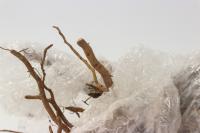1、 Curing method
1. Flowerpot: Black persimmon is mostly used in bonsai production, so the flowerpot with strong air permeability and good water absorption capacity is the most suitable. General pottery basin, clay basin, stone basin and porcelain basin can be used for planting, among which purple sand pottery basin is the most popular
2. Substrate: Black persimmon can also grow in poor soil. If possible, soil with strong permeability and good fertility can be selected. Rotten leaf soil and nutrient soil can be mixed for planting

3. Moisture: Black persimmon likes to grow in a humid environment. It can be watered a little every 2-3 days to keep the flower soil slightly wet. The weather is hot in summer. You can increase the amount of water and times. At the same time, you can also spray a small amount of water around with a watering can to supplement water for the leaves while cooling down
4. Nutrients: when growing new branches in spring, more nitrogen fertilizer should be applied to promote the healthy growth of branches. More phosphate fertilizer can be applied during the growth period, and then plant ash can be sprinkled every other period of time

2、 Breeding skills
1. Sowing: the fruit of black persimmon will mature in autumn. After picking the ripe fruit, take out the seeds and dry them in the sun. Try to dry in a ventilated place to prevent seeds from rotting. After the next spring, prepare fertile and moist soil and plant it
2. Cutting: it is mainly carried out in spring or summer every year. Before cutting, prepare fertile and humid soil, cut the branches from the mother plant and directly insert them into the soil

3、 Diagnosis and treatment problems
1. Hornspot: if the fruit softens or falls in advance, it may have been ill. The outbreak period of angular spot disease is from July to August every year. Before that, the incubation period is from May to June. 75% chlorothalonil 1000 times can be sprayed on the back of leaves for control
2. Peach borer: Peach borer bears cocoons every year to survive the winter and eats fruits for a living. The outbreak occurs in August and September every year. At the initial stage, trichlorfon can be mixed with water and sprayed

4、 Other issues
1. Whether it is poisonous: the fruit is poisonous. The shape of the fruit is similar to that of ordinary edible persimmon, which will cause accidental eating. It should be kept away from it as far as possible. Pay special attention when watching with children to avoid unnecessary trouble
2. Flowering period: every spring is the flowering season of black persimmon. When flowering, the flowers are charming, and most of the flowers are white, which is highly ornamental


 jackfruit
jackfruit snake plant
snake plant hibiscus
hibiscus hydrangea
hydrangea lavender
lavender Green roses climb al...
Green roses climb al... If you don't pay att...
If you don't pay att... Management of four g...
Management of four g...

































